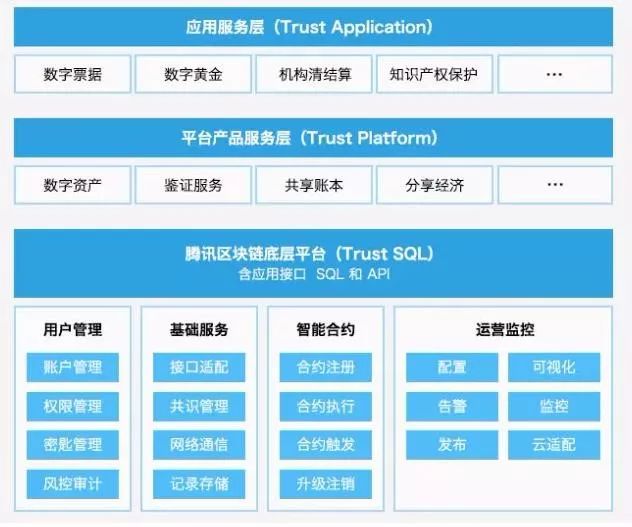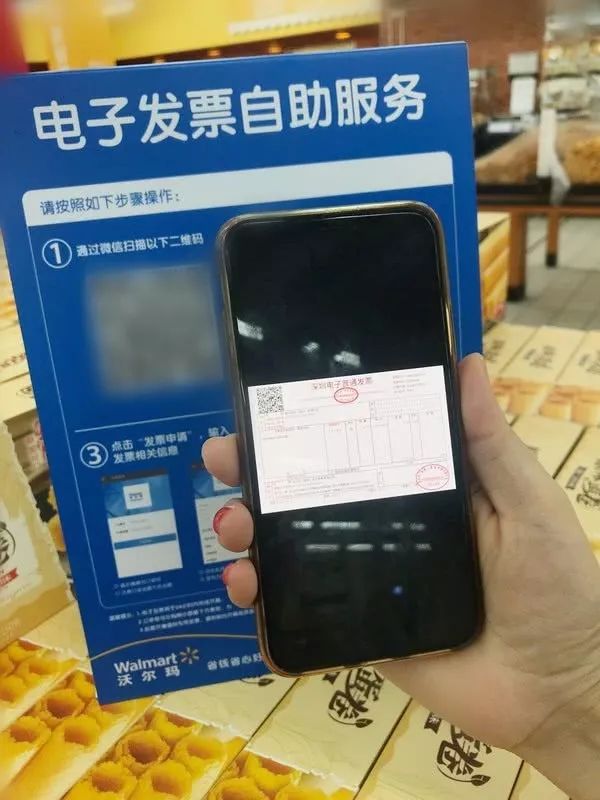How did China's first blockchain invoice come into being?
Source: Chinese and foreign management magazine , the original title "" Hi, you have a blockchain electronic invoice, please check! ""
Author: Zhu Dong
Internet company employee Zheng Chao can receive 500 yuan of transportation subsidy from the company's finance department every month. Therefore, Zheng Chao will experience some invoices at the end of each month, and sometimes he needs to print the electronic invoice, submit it to finance, sign it, and wait for the subsidy to arrive. Since the Shenzhen Blockchain electronic invoice went online in August 2018, “transactions are invoiced and invoiced is reimbursed”. Thereafter, Zheng Chao ’s monthly transportation subsidy can be processed through the entire online process, and no longer needs to be due to invoices at the end of each month. bother.
Countless people in Shenzhen, like "Zheng Chao", are changing quietly.
- Opinion | Underrated Ethereum: Victory is almost doomed, the only difference is now or in the future
- In 2019, currency-related crimes caused US $ 6 billion in losses, and US $ 1 billion in BTC for the dark web
- Ethereum becomes the central bank's top choice? RBA begins testing central bank digital currency on Ethereum network
After applying the blockchain technology, the WeChat user parking payment issuance invoice process becomes: the owner scans the QR code at the scene, enters the license plate and pays the parking fee on the mobile phone, and the WeChat public account of the parking system automatically pushes the entrance of the “invoice application notification” , Click to enter, enter the invoice header and tax number, and issue an electronic invoice with one click. The whole process does not exceed 2 minutes.

This blockchain electronic invoice is an important landing product of the Shenzhen Taxation Bureau and Tencent's "Smart Tax" Innovation Lab. As of October 30 this year, the Shenzhen block chain electronic invoices have exceeded 10 million invoices, involving more than 7,600 enterprises, and the invoiced value exceeds 7 billion yuan.
In October 2019, the blockchain has become a national strategic core technology, but the application of blockchain electronic bills has already been advanced. What is its magical power?
In an exclusive interview with Sino-Foreign Management, Cai Yege, the general manager of the blockchain of Tencent Virtual Bank, interpreted the application scenarios of blockchain technology on electronic bills and the "smart tax" jointly established by Tencent and Shenzhen State Taxation Bureau. The ins and outs of the Innovation Lab project.

Cai Yige: General Manager of Tencent Virtual Bank Blockchain
1 The birth of blockchain electronic invoices is inevitable
In November 2019, the dean of a welfare home in Liaocheng, Shandong Province, was jailed for abusing his powers and embezzling more than 500,000 yuan in donations through repeated invoice reimbursement. This is a typical case of loopholes in invoice reimbursement.
"For individuals and businesses, it is impossible to check whether the invoice is reimbursed, and the cost of invoicing cannot be ignored. For the tax bureau, it is also facing the chaos of traditional invoices with one over-vote and false reports." The main pain points of ticket management are: the ticket does not carry the life cycle status attributes of assets during the transfer process, there are problems such as easy tampering, and the process does not have a true electronic closed loop. One overvote, false report, and high supervision costs are incidental. problem. The electronicization of electronic invoices is not complete, and there is no closed loop in key links. The essence of these problems is the lack of life cycle status of electronic invoices.
As a new technology, blockchain is inherently applied to the field of digital assets, and is unique. The electronic bill based on the blockchain has the characteristics of complete traceability of the entire process and information cannot be tampered with. It can effectively avoid fake invoices and improve the invoice supervision process. In addition, the blockchain electronic invoice can trace the source of the invoice, the authenticity, and the account information, and solve the problems of overreporting, false reporting, and difficult to verify. In addition, the characteristics of decentralized and multi-centric distributed consensus of the blockchain also help to build mutual trust in multi-party cooperation.
Because of this, the landing of blockchain electronic invoices seems to be accidental, in fact, it is the necessity of technological development and the need of the times.
Back to the beginning of 2015, Tencent's experts in Silicon Valley deeply realized that bitcoin and the blockchain are hot in Silicon Valley, and the distributed database and other technologies of the blockchain have more similarities with the technology accumulation of Tencent's WeChat red envelopes. In view of independent research and development of core technologies, Tencent decided to develop a fully autonomous and controllable underlying blockchain technology, and determined to make blockchain technology and applications easy to use and widely available.

2Tencent's blockchain team
At the end of 2015, Tencent started building a blockchain team. At the time, Guo Rui, the deputy general manager of Tencent's payment basic platform and financial application line, led the team and completed the stage of blockchain from theory to technology within two years from 0 to 1. In August 2017, Cai Yange officially joined the Tencent blockchain. As an "old Tencent person" who has been with Tencent for 11 years, Cai Yange became the head of Tencent blockchain and served as general manager of the blockchain business.
Cai Yige recalled that at that time, due to the blockchain technology, it was still very unpopular in China, so the technical strength to extract it for research was limited. Although the blockchain virtual project team was established, there were only two technical colleagues dedicated at the most nervous time. Responsible for the research and development of the blockchain, more often by relying on foreign aid from other departments, and even rely on cross-sector "part-time" to do some research and contributions. "Everything is difficult at the beginning, but one idea is very clear: Blockchain must serve scenario applications."
This also laid the groundwork for the birth of blockchain electronic invoices with strong service scenarios in the future.
With respect and enthusiasm for scientific research, from 2015 to 2017, the technical foundation of the Tencent blockchain R & D team was upgraded from version 0.1 to version 0.6. "The" trust "of the blockchain is built on consensus algorithms. All nodes of the blockchain electronic invoice are also distributed clusters that can be trusted. The biggest value of Tencent's blockchain team is to realize the blockchain consensus algorithm through self-research. "Cai Yige said.
Cai Yige revealed that their team had made many pit trips. At first, the R & D team thought that the authoritative thesis of the blockchain was clear in logic and should soon be implemented. Later, it was discovered that there was a huge gap between theory and engineering. "After the original experiment, there were a lot of anomalies and conflicts. The team went through modifications, even overthrowing and re-planning the solution, until the problem of each node was finally overcome."

In April 2017, Tencent officially released the blockchain white paper, which also marked the official birth of the Tencent blockchain. In order to achieve the goal of scene-based applications as soon as possible, Cai Yange began to communicate with the product team to discuss with the product team from once a month to once a week, in-depth understanding of the team's situation and position in the industry. In order to achieve breakthrough application scenarios and make the application landing as fast as possible, Cai Yige led a blockchain product team with only two people to make multiple dimensions of 2C, 2B, 2G (government), as well as short, medium and long-term Complete planning, almost every possible scenario currently seen on the market has been thoroughly demonstrated.
To this day, the blockchain team remembers those days and is still full of emotion. It can be said that there was no such independent research and development tenacity, such openness and positive attitude that the blockchain team insisted on when it was established, nor the subsequent implementation and success of the blockchain electronic invoice project.
3Smart Tax Lab, the first blockchain invoice in the country
In May 2017, when the Tencent blockchain team and WeChat team jointly created a "philanthropic tracing project" based on blockchain, after the philanthropic tracing chain went online, they discovered the life cycle of electronic invoices in an accidental chat. Naturally fit in the asset lifecycle management of the blockchain, so the two parties quickly pushed for the completion of the initial scheme.
Convinced of the prospects and future of blockchain electronic invoices, Cai Yige led the team to Beijing several times, discussed with the team of electronic invoice giant Aerospace Information Co., Ltd., and scholars and experts at Renmin University of China. communication.
The preliminary preparations finally made substantial progress in January 2018. At a time when the Shenzhen Taxation Bureau has been seeking innovations in tax supervision technology, both parties lamented each other's expertise and accumulation after being drawn by the Tencent Finance Outreach team. In March 2018, Tencent completed the basic scheme plan based on the blockchain electronic invoice, and after being approved by the Shenzhen Taxation Bureau, the two parties jointly established a smart tax lab on May 24, 2018. People, government macro management and other perspectives, systematically explore the new generation of ecological tax management modernization platform, and in-depth cooperation in the field of "Internet + taxation". The core item is the blockchain electronic invoice.
Blockchain technology is used for invoicing, which is also the country's first underlying infrastructure-level blockchain service. Hard work pays off. From 2018 to 2019, the product team focused on completing the construction of the blockchain electronic invoice scheme. On August 10, 2018, the Deputy Commissioner of State Tax went to Shenzhen to witness the issuance of the first block chain electronic invoice that was fully approved by the State Administration of Taxation.

However, after the blockchain electronic invoice goes online, how to make the distributed technology's performance capable of carrying the nation's ability to issue invoices is another layer of skill test. The technical team has further exerted the spirit of forging ahead, optimized a large number of technologies, finally reduced the cost and raised the performance. At the same time, because of the scene-driven, it also polishes the underlying technology of the Tencent blockchain to be more flexible and stand the test.
Blockchain electronic invoices have been in Shenzhen for a year, and over 10 million invoices have been issued on the chain, with more than 7,600 registered companies. During this period, the Tencent team also really discussed with the Shenzhen Taxation Bureau to solve the problem of how the decentralized technology of the blockchain can be combined with centralized government governance: that is, the blockchain electronic invoices really use the distributed technology to enhance the center. Governance efficiency. At the same time, it also proposed exploratory measures based on smart contracts, and the concept and practice of innovative patents.
4 Blockchain electronic invoice experience, where is the bull?
After all, not everyone is a blockchain technology expert. As a daily user, how can we better appreciate the advantages of "blockchain + invoice"?
Qin Chao, a product manager who also belongs to the Tencent blockchain team, cited a case at Walmart. Starting on November 8, 2018, Wal-Mart's Shenzhen stores began trials of issuing blockchain electronic invoices. "It turned out that each of Wal-Mart's 43 stores in Shenzhen had to arrange a clerk to invoice. In particular, every weekend, Wal-Mart stores have a large number of people, and consumers often have to queue up for invoices. Because it is troublesome to fill in tax numbers and make up, Invoicing employees are often complained that they have been wrongly opened. Since the Shenzhen Wal-Mart store has fully covered the technology of blockchain invoices, consumers can scan the QR code, and the entire process of invoicing can be completed by mobile phone self-service. When you see the list of goods, you can print it on the spot, which is really convenient. "
Teller feedback from Wal-Mart stores: "In the past, customer service counters were not only responsible for customer returns, parking services, after-sales registration, but also invoicing. Now the entire process of invoicing can be completed by customers. The service is more efficient and the customer experience is better. All right."

Tencent staff introduced that in August 2019, Tencent also launched the "Invoice Folder" application. Through the "Invoice Folder" function on corporate WeChat, corporate employees import blockchain electronic invoices stored on WeChat cards and other channels, anytime, anywhere. Apply for reimbursement, and the financial staff can pay online at any time after reviewing. The previous cumbersome reconciliation link will be effectively converted into a full-process electronic processing. In October 2019, the Blockchain Invoice International Standard was approved. Tencent, China Communications and Shenzhen Taxation Bureau will jointly develop the standardization of blockchain invoices on behalf of China, including discussion and revision of the draft, until the standard is released.
Cai Yange concluded that the most important thing about Tencent's blockchain invoice solution is "on-chain invoicing." Different from other schemes, other schemes basically put the electronic invoices that have been issued on the chain in the form of certificate deposit, which only solves the problems of the existence of invoices in circulation and not being tampered with, and overreporting one ticket, but it cannot solve the problem. Whether the order and payment amount at the time of invoicing are true and consistent with the amount issued on the invoice, and the Tencent blockchain electronic invoice solution, because it is connected with WeChat payment, can ensure the authenticity of the amount at the time of invoice is more complete and The plan that meets the regulatory requirements is also the one that really brings into play the true value of blockchain in government governance.
In short, from paperless billing, saving billing costs; one-click billing, saying goodbye to the tedious "hand-ticketing"; waiting in long lines for manual billing to fill in the information invoice on the mobile phone starts with "second" … Blockchain electronic invoice , Make "technology + tax" more intelligent, convenient and efficient.
Although some insiders said that electronic invoices are still a rising industry, the current penetration rate of domestic electronic invoices is only 5%. However, with the deepening of national tax reform, I believe that the future of blockchain electronic invoices is worth looking forward to.
We will continue to update Blocking; if you have any questions or suggestions, please contact us!
Was this article helpful?
93 out of 132 found this helpful
Related articles
- Over 600 million U.S. dollars invested in a year, 71% from institutions, Grayscale annual report reveals Bitcoin trends
- Babbitt Column | Cutting-edge regulatory technology for capital markets
- Russia's new Prime Minister calls for priority development of the digital economy, is the opportunity for blockchain coming?
- Analysis | Which blockchain projects have the largest number of giant whales in the "ocean"?
- How will the US election affect crypto legislation?
- Zhu Jiaming's speech at the United Nations Blockchain Forum: Actively Facing the Challenges of the Global Trust Crisis and Trust Deficit
- Popular Science | DeFi Beginner's Guide






